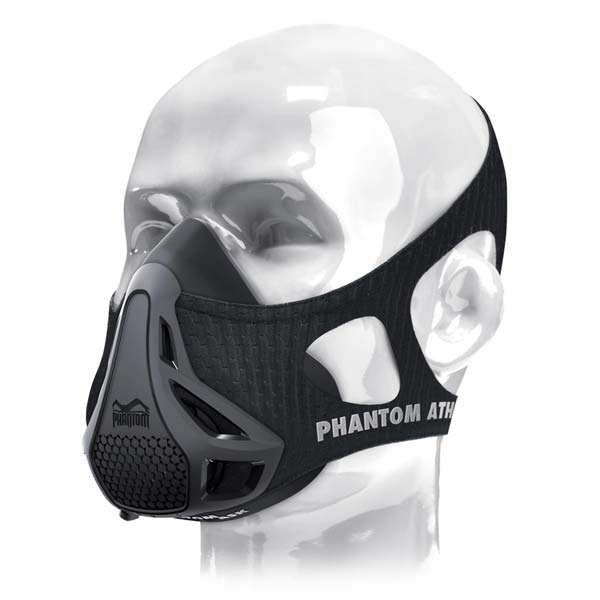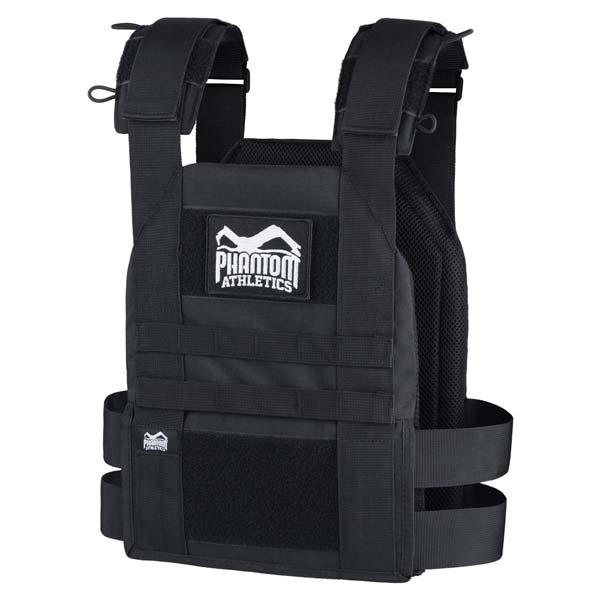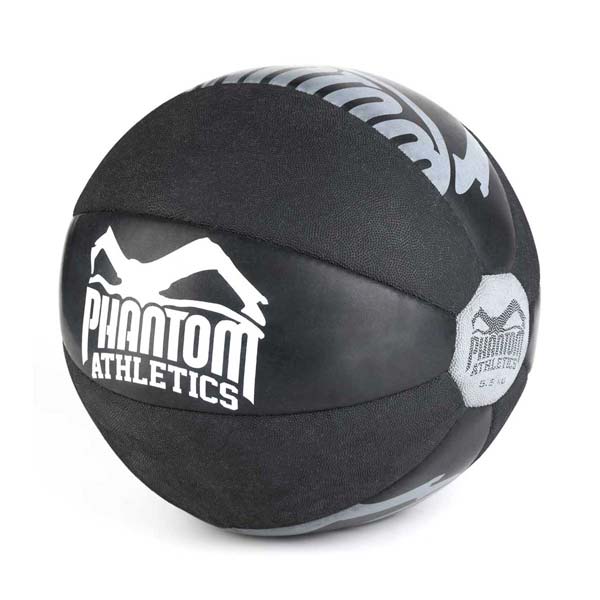Have you ever felt like all the energy was being sucked out of you during training or a competition? Are your lungs burning, your muscles shaking and exhaustion paralyzing your performance? Of course you do. And you also know that there is no worse feeling in the world, especially if you are a competitive athlete.
Athletes have always looked for new ways to improve their performance and thereby gain an advantage. But as comprehensive and complex as some new training solutions may be, the emphasis has never been placed on the issues of breathing and strengthening the body's cardiorespiratory system. The Phantom training mask has now vowed to change that:
But before you roll your eyes and think that this is just advertising praise for a product, then relax. You won't find statements like "hot new product" or "buy NOW and get one for free" here. Phantom is committed to bringing ultimate training solutions to the market. And of course we will put our proud statements to the test. We'll break the product down and look at the scientific and anecdotal data, potential uses, benefits AND limitations of the Phantom Training Mask.
Simulation of altitude training?
Altitude training has been practiced for decades to increase athletic performance. Training in a hypoxic environment (low oxygen) increases red blood cell mass and oxygen transport, thereby providing athletes with a measurable increase in performance when they return to competing under normal conditions (i.e. at normal altitude) (Gore et al, 2007)A few years ago, this “altitude training” was reserved for the elite athletes, but a few years ago it also made its way into the sporting mainstream. Since then, every self-respecting exerciser has been caught wearing a special mask in the gym to simulate altitude training. But what may seem revolutionary as a concept has not yet been proven in scientific studies.
The research is clear: training masks do not simulate altitude training. They have no measurable impact on hemoglobin and hematocrit levels and energy production. And even if you did, you would have to wear the mask for weeks (20+ hours a day) to see any real improvement (Miller et al, 2010). So if you're trying to simulate altitude training in the hopes that your body will produce more red blood cells and promote oxygen transport, save your money for a trip to the mountains.
Now that we've gotten that out of the way, are there any actual benefits to wearing a workout mask (other than making you look like a comic book villain)?
Cardiorespiratory fitness and inspiratory muscle training (IMT)
Although training masks cannot simulate hypoxic conditions, they do provide resistance to your breathing, triggering a physical adaptive response (Klusiewicz et al 2008). The pulmonary system can be a limiting factor for maximum performance in top athletes. Respiratory muscle fatigue and hypoxemia have been shown to lower the training limits of advanced exercisers (McKenzie, 2012).And while altitude training claims have been debunked, current research has uncovered a new performance parameter: cardiorespiratory fitness. Like any other muscle, your breathing muscles from the diaphragm to the muscles between the ribs need to be trained and strengthened so that you can deliver your maximum performance. A specific form of inspiratory muscle training has been shown to increase the strength and endurance of the respiratory muscles. (Williams et al, 2002). IMT is particularly promising in high-intensity aerobic training scenarios.
Away from the hype: What do athletes say?
If we get actual feedback from the real world, you'll immediately be amazed at the sheer volume of responses that training masks have elicited. As controversial as this new piece of equipment may be, the people who actually use it swear by its performance benefits and see measurable differences in work ability and recovery. In addition, athletes vouch for the training mask's ability to simulate combat situations in which breathing may be restricted. Another benefit is the mask's ability to teach proper breathing techniques. This leads to better cardiorespiratory performance as soon as the mask is removed.Are the benefits physiological or rather psychological? Are all the great reviews due to the infamous placebo effect? Whatever the case, and depending on what you're looking for, chances are that workout mask has just earned a place in your gym bag.
What is different about the Phantom training mask?
If you are an experienced athlete, then you have probably heard of the overload principle. In order to strengthen your muscles, they must gradually be confronted with heavier resistance. There's no way around it. So you need to continually use more weights in your exercises if you want to improve your muscle strength and size (Kraemer et al, 2002). With the Phantom training mask you can do exactly that thanks to the soon-to-be patented Phantom Regulation System (PRS). The mask offers 4 levels of inhalation resistance, allowing you to spontaneously adjust the breathing resistance and constantly work on your respiratory fitness.
But as promising as that may sound, you probably won't wear the mask regularly if its performance compromises comfort. This is where the Phantom training mask really stands out from the competition. Thanks to the processed high-quality materials (e.g. medical silicone) and anatomically adapted components, the mask offers outstanding wearing comfort and robustness. So the quality of the construction will make the workout hard on your breathing, not your nerves.
The judgment
The Phantom Training Mask is particularly useful for advanced athletes who want to gain an advantage in their training performance and recovery between sessions.
Do you need the mask in your repertoire?
What are your goals? Is inspiratory muscle fitness a limiting factor in your sport? Are you looking for new ways to expand your anaerobic threshold and take your training to the next level? Then try out the Phantom training mask at your next session and see for yourself what's behind it.
Contact
Do you have any questions about the Phantom training mask? You can contact us at any time here:
-
email: info@phantom-athletics.com
-
Tel.: +43 (0) 1 325 22 58
-
Facebook: www.facebook.com/PhAthletics
-
Instagram: phantom
-
Snapchat: phantom .athl
-
WhatsApp: +43 676 3965188
–> we are happy to help!









